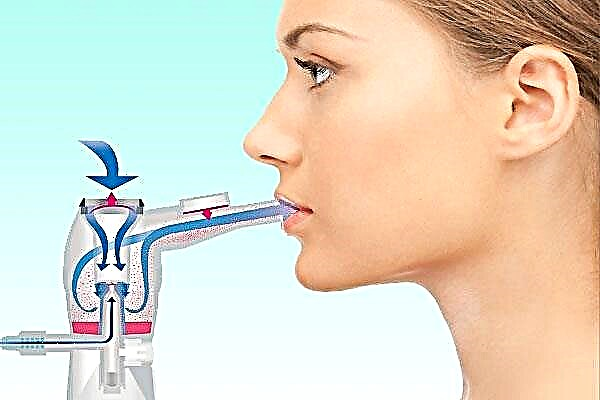What is polysinusitis? This question is of interest to everyone who has been diagnosed by the doctor. Let's figure it out: polysinusitis - what is it and how can it be treated? The nose is the most important respiratory organ in which the air is filtered and warmed up. A person has 7 paranasal sinuses (sinuses): three paired (ethmoid, frontal and maxillary) and one unpaired (wedge-shaped). The sinuses and nasal passages are covered with a thin membrane that produces mucus. In a healthy body, snot is released on its own. But with infectious diseases, the mucous membrane swells, and the paranasal sinuses are blocked, which disrupts the secretion discharge. In the blocked cavity, a pathological process begins - sinusitis. Simultaneous inflammation of several sinuses in medicine is called polysinusitis. It can proceed in an acute form or transform into a chronic one.
Causes, symptoms, diagnosis
Factors provoking the development of the disease:
 acute respiratory viral infections;
acute respiratory viral infections;- untreated rhinitis;
- a weak immune system;
- mycosis;
- hormonal imbalance;
- stopping nosebleeds with gauze tampons;
- inflammatory processes in the oral cavity;
- taking drugs that inhibit the protective functions of the body;
- negative impact of the environment;
- unfavorable working conditions;
- alcohol, tobacco and drug addiction;
- chronic inflammation of the respiratory tract.
Symptoms:
- labored breathing;
- choking, unproductive night cough;
- inability to perceive and distinguish smells;
- restless sleep;
- migraine, dizziness;
- fever;
- nasal discharge different in color, composition and frequency (depending on the neglect of the disease);
 hoarse, hoarse voice;
hoarse, hoarse voice;- hearing problems, ear congestion;
- swelling and red spots on the face in the area of the paranasal sinuses;
- lethargy and general deterioration in the patient's well-being.
If after a week the symptoms of an acute respiratory viral disease persist and are aggravated by severe migraines, fever, shortness of breath and thick secretions, the patient must urgently contact the clinic for advice.
The doctor will clarify the symptoms, examine and analyze the condition of the mucous membrane (with sinusitis, it contains secretions, which provokes swelling). The list of basic studies includes a general blood test, which determines the presence of inflammatory processes in the body. The patient will also receive a referral for a sinus x-ray, which will help identify a darkening indicating the development of sinusitis.
If the diagnosis is uncertain, the patient will be advised to undergo a sinus examination using computed tomography.
Forms of the disease and treatment
Acute polysinusitis is caused by a bacterial infection that has settled in the nasopharynx. Symptoms are pronounced and significantly interfere with the usual human activity. With purulent polysinusitis, the nasal secretion does not stand out at all, or very little. This disease is dangerous due to a blockage of viscous secretions in the sinuses. Therapy consists in piercing the paranasal cavities with the piercing method to remove mucus and pus.  After the procedure, a tube is inserted into the sinuses, with the help of which the purulent accumulations are flushed out of the sinuses. Acute purulent polysinusitis is treated exclusively in a hospital.
After the procedure, a tube is inserted into the sinuses, with the help of which the purulent accumulations are flushed out of the sinuses. Acute purulent polysinusitis is treated exclusively in a hospital.
Since this ailment is provoked by bacteria, after the diagnosis of ENT, he prescribes a course of antibiotics (for example, "Ceftriaxone"), antihistamines and anti-inflammatory drugs that normalize metabolism. Local therapy consists of flushing the nasal passages with sodium chloride solution.
Polysinusitis, the treatment of which was not successful or was not carried out at all, is transformed into a chronic form. It can also be an independent disease with:
- constant difficulty breathing;
- minor migraines;
- normal body temperature.
Chronic polysinusitis is especially dangerous by the development of complications of varying severity. Its treatment consists of antibiotic therapy (azithromycin), physical therapy, and flushing of the nasal passages.
The catarrhal form of polysinusitis develops with a viral infection of the nasal cavity. In the treatment of this disease, antiviral drugs are used instead of antibiotics, the rest of the above treatment methods remain.
Polypoid polysinusitis is characterized by blockage of anastomosis due to the proliferation of mucous membranes. With this form of the disease, the patient needs to remove the neoplasm by surgery, then the therapy is carried out according to the classical scheme.
Treatment of polysinusitis in childhood is very difficult, since medications have many side effects that negatively affect the health of babies. To avoid negative consequences, it is not recommended to undergo surgery for children. The main method of treating polysinusitis in children is rinsing the nasal cavity and prescribing topical medications.
Nasal drops with a vasoconstrictor effect, aerosols-antibiotics, expectorants with natural ingredients are widely used. All medications should only be used as directed by a physician.
Why is it important to treat polysinusitis?
People do not always pay enough attention to their well-being and postpone the visit to the doctor. Ignoring the first symptoms of the disease and  delaying treatment can cause more serious health problems. The focus of infection will spread beyond the sinuses of the nose through the bony septa through the bloodstream, especially quickly - with high blood pressure. Pathogenic microorganisms will provoke the formation of a blood clot and the appearance of multinucleated large cells that destroy bone tissue. The bone crushers will make passages through which the infection reaches the eye socket and cranial cavity.
delaying treatment can cause more serious health problems. The focus of infection will spread beyond the sinuses of the nose through the bony septa through the bloodstream, especially quickly - with high blood pressure. Pathogenic microorganisms will provoke the formation of a blood clot and the appearance of multinucleated large cells that destroy bone tissue. The bone crushers will make passages through which the infection reaches the eye socket and cranial cavity.
The chronic form of polysinusitis gives serious complications in exacerbations that occur even with minor hypothermia. Lingering illness and improper treatment are dangerous with unpleasant consequences. The development of polysinusitis provokes the spread of pathogenic microbes in the lower respiratory organs and new diseases: tracheitis, bronchitis, pneumonia. The breakthrough of purulent accumulations leads to meningitis, encephalitis, brain abscess.
A progressive inflammatory process can cause infection of the bone system and the development of osteomyelitis. Prolonged polysinusitis occasionally contributes to the infection of the organs of the genitourinary and cardiovascular systems, which are much more difficult to cure than sinusitis.
Sometimes it is quite problematic to diagnose complications in polysinusitis due to an unclear clinical picture. With a lesion of the skull, the prognosis is poor, and a lethal outcome is possible.
Herbal medicine in treatment and prevention
Today, chronic inflammatory processes in the paranasal sinuses are leading among all ENT diseases. Polysinusitis, the symptoms of which are rather unpleasant, affects more and more patients every year. Weakened immunity and the depressing effect of antibiotics on the body increase interest in herbal preparations and homeopathy. This is not surprising, because herbal treatment has always been relevant.
 Scientific studies have shown that the main cause of chronic inflammatory processes in the respiratory system is a decrease in the general level of immunity, resistance of the mucous membrane to antibiotics, increased sensitivity to bacteria and allergic processes. Therefore, it is advisable to use drugs that increase immunity. During treatment, it is very important to consider the duration of the disease.
Scientific studies have shown that the main cause of chronic inflammatory processes in the respiratory system is a decrease in the general level of immunity, resistance of the mucous membrane to antibiotics, increased sensitivity to bacteria and allergic processes. Therefore, it is advisable to use drugs that increase immunity. During treatment, it is very important to consider the duration of the disease.
The most important advantage of phytopreparations is a wide range of their influence on pathology and correction of immune responses. Plant-based anti-inflammatory drugs act on the site of infection by activating the body's defenses.
Already in the first days of taking herbal remedies, patients recover the ability to perceive and distinguish odors, headaches, lacrimation, tremors in the body and a feeling of heaviness in the paranasal sinuses disappear. After a week of using the drug in patients, breathing and blowing out easier, purulent mucus is transformed into normal.
Phytopreparations are recommended for use in hospitals of medical institutions for the treatment of people with acute inflammatory diseases of the nasopharynx and paranasal sinuses. They can be the main or additional method of therapy, depending on the severity of the disease.

 acute respiratory viral infections;
acute respiratory viral infections; hoarse, hoarse voice;
hoarse, hoarse voice;

